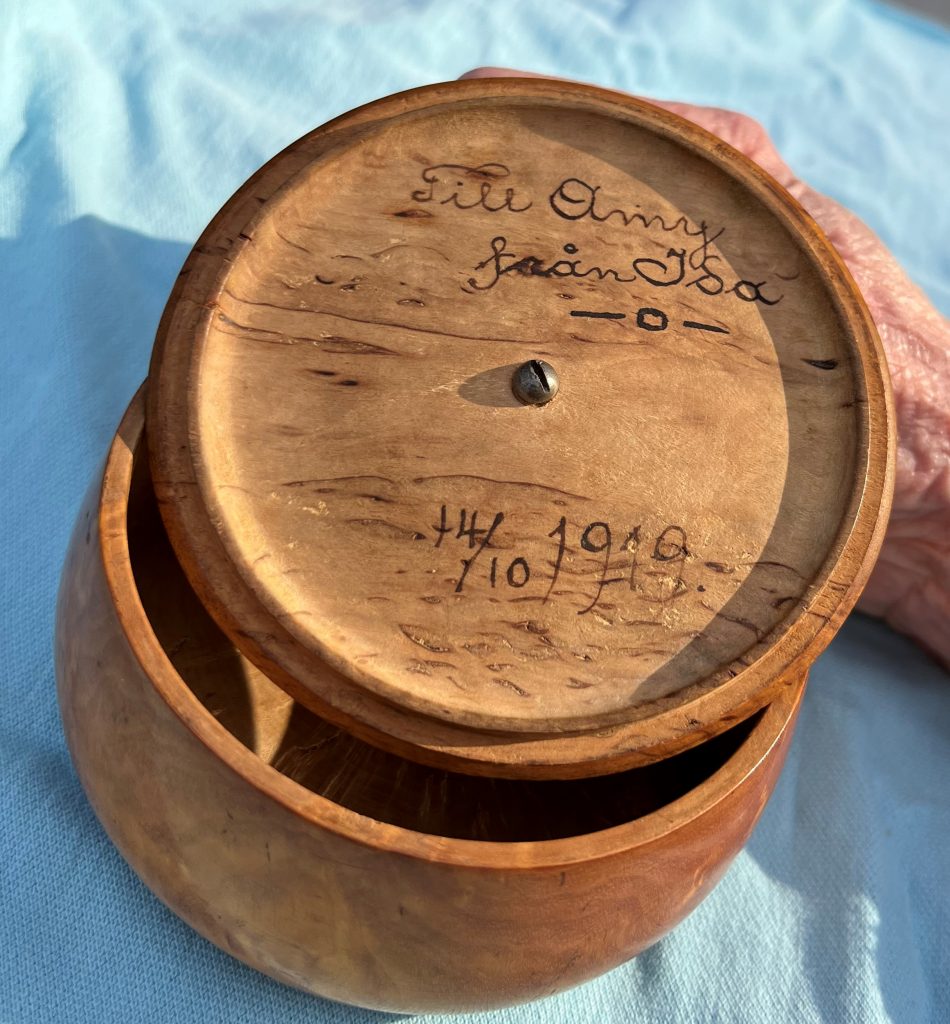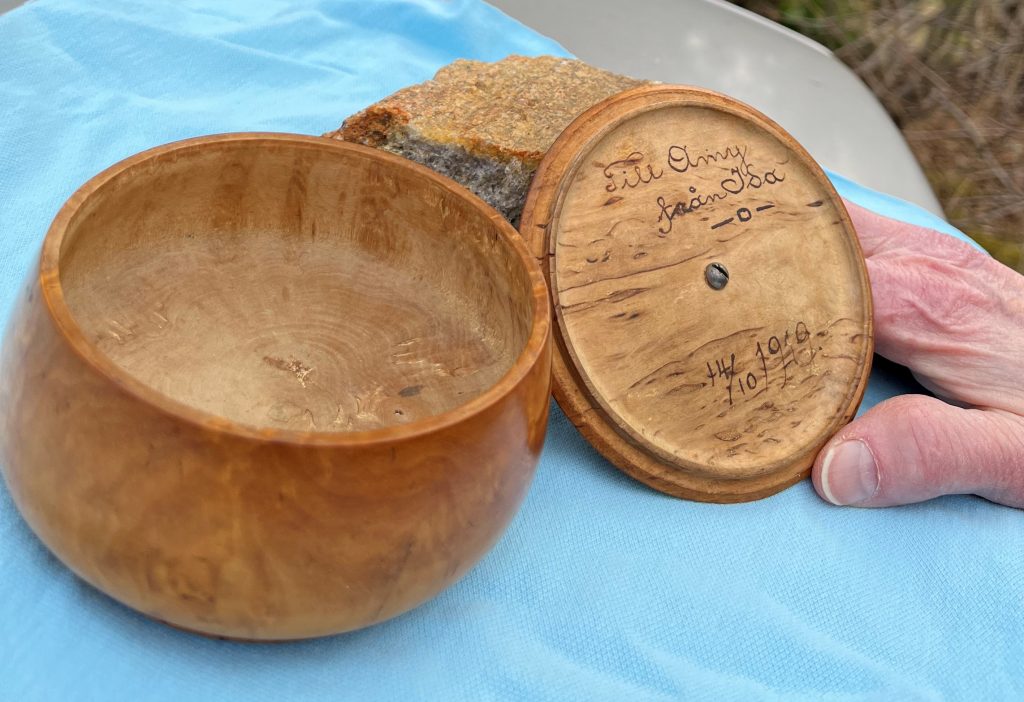My mother had a small polished wooden bowl in her house for many years, which had belonged to her mother, Amy Johnson Lindgren. The bowl has a matching removeable lid with an inscription in Swedish burned into the underside, “Till Amy från Ida, 14/10/1919” (date written European style: day/month/year). Translation: “To Amy from Ida, October 14, 1919”
Ida was Frank Lindgren’s sister-in-law. Frank Lindgren was one of six children, all born in Sweden. Four of the six – Frank and his older brother John (the sons of Peter Magnusson) – and their sisters Selma and Jenny – emigrated to America in the 1890s. The other two sisters – Ida and Amanda – remained in Sweden with their elderly parents Peter Magnusson and wife Ingrid. The four who emigrated took the last name of Lindgren in America. In May 1913, the year before World War I began, they received word that their mother Ingrid had died. Frank and John planned to make the long trip back to Sweden after the war ended to visit their still-living father and other relatives.
The Armistice was signed in November 1918, the war was over, and the brothers planned to go back in 1919. But at the last minute, Frank felt he had to cancel, because his daughter Ruth (my mother), then 6, had become ill (according to Irene). This was at the time of the great world-wide “Spanish” flu pandemic of 1918-1919, brought home to America and other countries by returning troops. It killed millions worldwide. The whole Frank Lindgren household except for daughter Gene had had the flu in early 1918. They all recovered, but when 6-year-old Ruth got sick again the following year, Frank probably feared this was another bout of the flu, and that he would go to Sweden only to find that his little daughter Ruth had died while he was away. So John went on to Sweden alone.
It turned out that Ruth had scarlet fever (according to Roy), which was also a dangerous disease in those days. Probably Ida meant to give this little bowl to Frank to carry home to Amy, but Frank’s brother John took it back to Amy instead. Ida probably had to plan a year ahead as the bowl was especially made, turned on a lathe and polished, and prepared with the inscription and date burned into the removable lid. The date says 1919, but John may not have gone until 1920. This was Frank’s only chance to go back to Sweden, as he began to establish a new life in America, and then his father died in 1924, so he never did go back.
Editor’s Note:
Photographs below were provided by Linnae and her neighbor Lana Tyssen. Linnae’s hand provides perspective on the size of the bowl.
With recent communications, Linnae is sending the bowl to Laura Gardner in Ames, IA. Laura will pass it along to her daughter, Grace, for safekeeping for another generation. Thanks to all for preserving this important artifact.




One reply on “Amy’s Wooden Bowl”
I’ve seen the bowl and was impressed by the precision. The top fits over the bottom perfectly to snap in place. It’s kind of like Tupperware — but made out of wood.